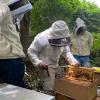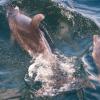FAQ
Visit our GeoNode platform and sign in.
Next, click the "Maps" button.
Finally, click "Add Resource" then "Create map" to begin.
Visit our Protected Areas Dashboard while signed in
Next, select the country you want to create a report on from the table or list
From the tabs on the left, select which pieces of data you want to include in the report
Next click the green button that appeared and begin organizing your report with the drag and drop interface
Finally, print or export your report in any of the available formats
Go to navigation toolbar
Click "Tools"
You will be taken to a page which displays all the available tools in a Slider
No, CPAG has a broader environmental focus than protected and conserved areas.
Our focus includes wider landscapes and seascapes, biodiversity, socioeconomics, threats and pressures and governance and management among others.
Read about our primary niche and our positioning.
CPAG was originally developed to cater to the 15 African, Caribbean and Pacific (ACP) group of states within the Caribbean (i.e. Antigua and Barbuda, The Bahamas, Barbados, Belize, Dominica, Dominican Republic, Grenada, Guyana, Haiti, Jamaica, St. Kitts and Nevis, St. Lucia, St. Vincent and the Grenadines, Suriname and Trinidad and Tobago). However, CPAG is currently in the process of expanding its geographic focus to the Wider Caribbean Region (WCR).
CPAG was borne out of the Biodiversity and Protected Areas Management (BIOPAMA) programme which is an initiative of the Organisation of African, Caribbean and Pacific States (OACPS) funded by the European Union, hence the ACP focus. However, CPAG is currently in the process of expanding its focus to the Wider Caribbean Region (WCR).
CPAG is a resource and information hub offering data / information, tools and services pertaining to biodiversity, natural resources and protected and conserved areas. Ultimately, CPAG aims to benefit stakeholders and practitioners by:
- collating the most up-to-date, accurate and salient data and information from international, regional, national and local levels
- developing and providing tools and services to facilitate improved conservation and sustainable use of natural resources
- fostering collaboration and facilitating networking and sharing amongst constituents
- improving the communication of data to allow for better decision making and policy formulation
The conservation of our biodiversity and natural resources requires stakeholders from all sectors. Given such, CPAG caters to a wide cross section of audiences including regional and sub-regional organisations, Government agencies, NGOs, CSOs, academic/research institutions, financial institutions, media, students and the general public.
Data is an extremely powerful tool when it is mobilised, combined with other relevant data sets, analysed and/or used to develop value-added data products which can improve our decision making. Keeping data locked away thus limits the possibilities for solving issues and dealing with the present day crisis of halting the rapid decline of our biodiversity and natural resources. CPAG thus aims to act as a central repository for accurate, pertinent, up-to-date data, while developing a robust community of data providers and data users.
All rights and permissions associated with any data shared with CPAG remain with the owners and custodians of the data. Data shared is incorporated into the platform to be visualised and added to other data sets where feasible to create value-added data products. Visualisations and value-added dat products can then be utilised to meet reporting requirements, in grants and proposals, for decision making and policy formulation, by students and academics conducting research and by funding agencies seeking to fund the conservation of biodiversity and natural resources.





